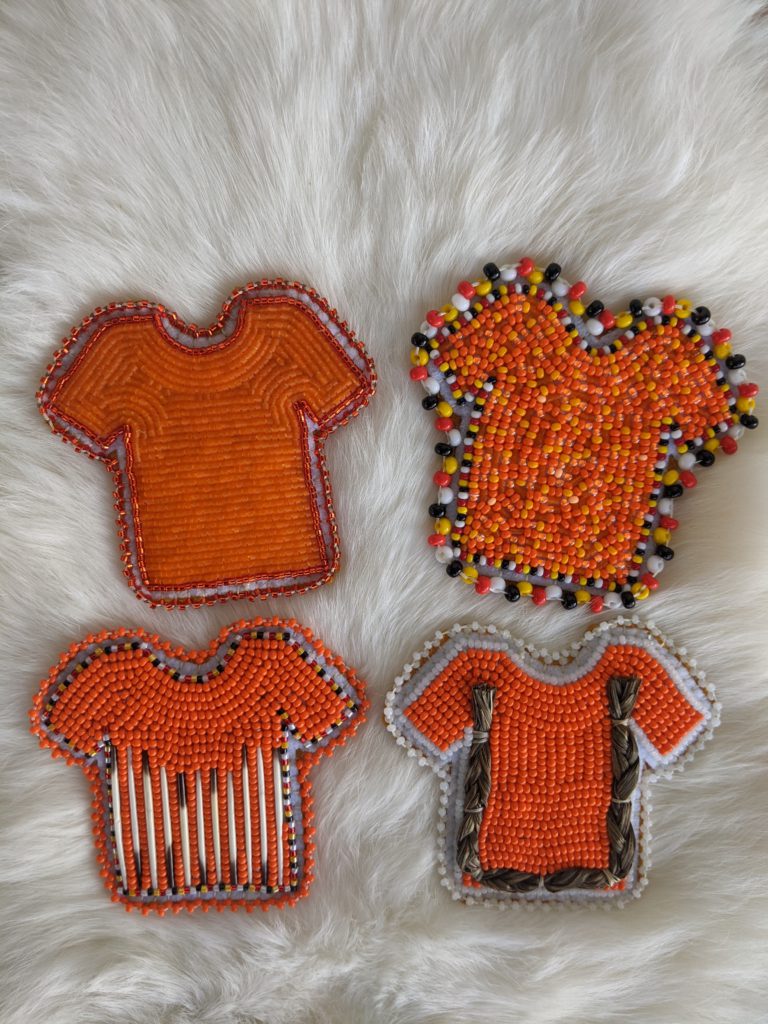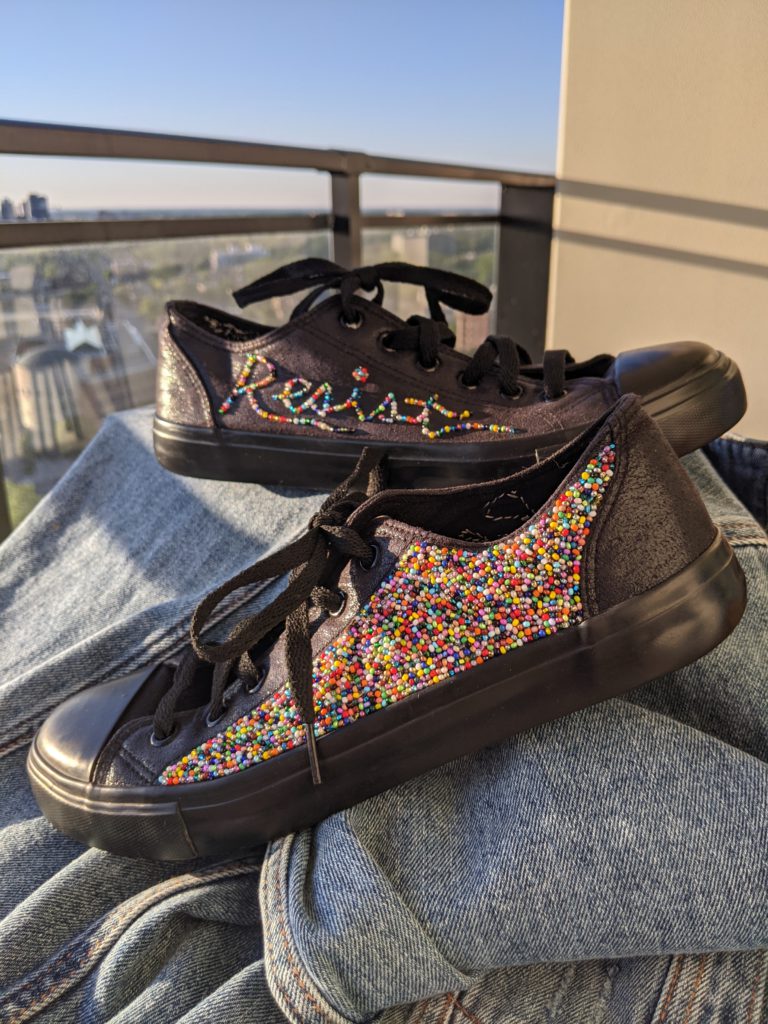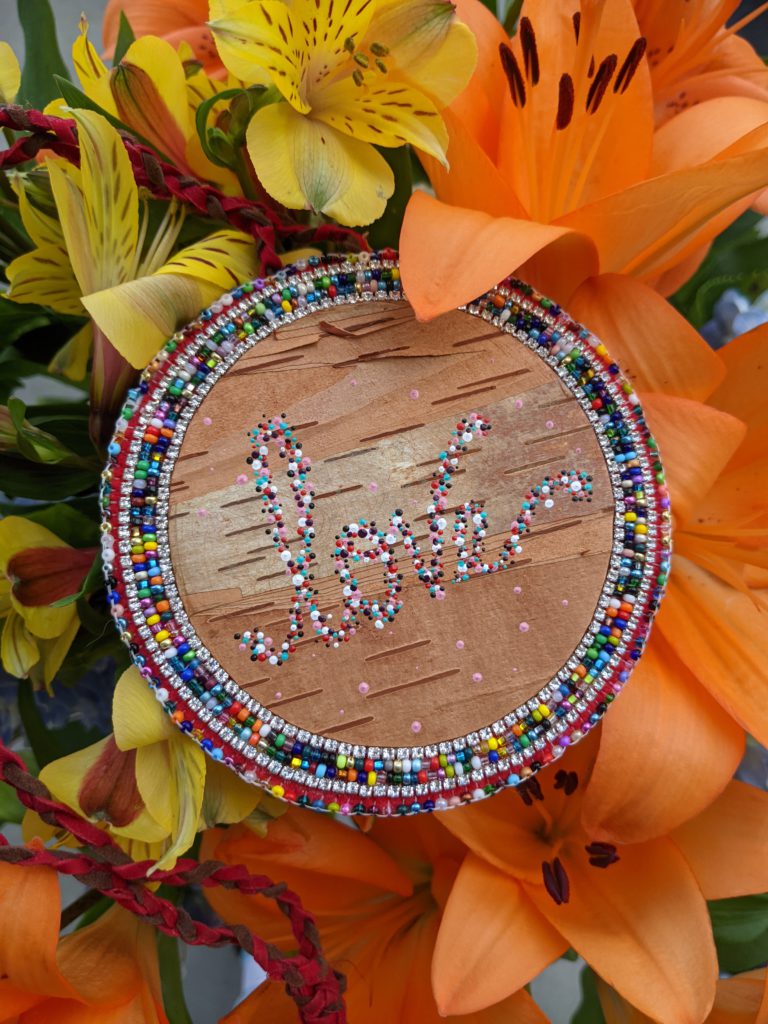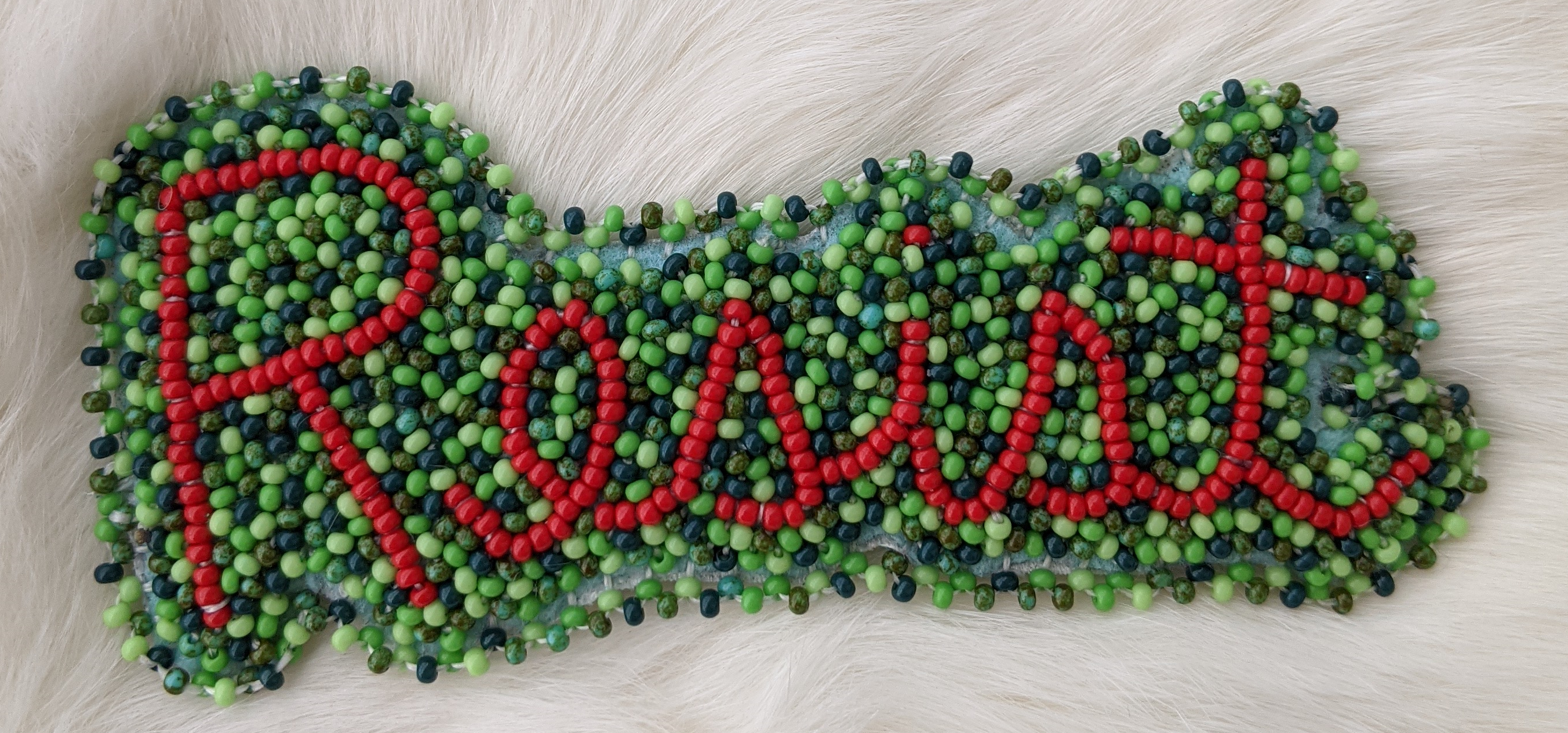Beadwork is much more than simply hanging beads onto a string, rather, it is a delicate and subversive artform — one that supports grieving and healing for C. Elizabeth Best.
As a PhD student at York, Best studies Indigenous child welfare policies in the post-war period, Indigenous activism, and the history of social work. On top of all that, they are also a gifted artist who practices beading.

“I bead because this art form connects me to my community,” they say. “I am Vietnamese and Metis (maternal), but I was raised in the child welfare system. My whole life is shaped by my experiences as a Scoop survivor.”
The Scoop, a series of policies enacted in Canada, allowed child welfare workers to take or “scoop” Indigenous children from their families, culture, and communities. These histories affect Best’s artwork.
“The art I created this summer reflects a period of mourning and grief. The best way I know how to express myself is through art.” Best says they have given away much of their artwork because their goal is to move people.
“I am a millennial Scoop survivor who was scooped in 1992,” they say. “The residential school system and the child welfare system overlapped, evolved, and produced the same genocidal effects. In 2021, Indigenous children continue to be overrepresented in child welfare, as many as at the height of residential schools.”

Best goes on to explain that their studies and art are interconnected. “My PhD will only last so long, but my artwork will continue on. History is everything to me. Art is everything to me. History and art are related through me and my experiences. I can not do research without art and vice versa.”
The interconnected nature of history and art has long been established — throughout time, immemorial artists have used creative mediums to reflect not only their lives, times, and culture, but their innermost selves and experiences.
“My PhD will only last so long, but my artwork will continue on.”
Beadwork is a deeply personal, cultural, and spiritual practice for Best. “I think blood memory exists,” they say. “I think my hands and my blood remembered doing this artwork before I actually learned it.” With so much of their culture having been stolen from them by the child welfare system, Best’s art and beadwork are a reclamation of what was stolen from them.
“My art practice is eclectic,” says Best, “I consider myself to be a beadwork artist, but I am interested in and produce a lot of material culture like clothing, jewelry, and wall hangings. I tend towards flat stitch beadwork, which is similar to sewing; each bead is carefully considered and placed.”
It is a practice that requires immense patience, yet its challenge is one of the reasons Best loves it. In a way, the slow nature of beadwork acts in opposition to the institutional and colonial framework of university.
With their artwork, Best does not have any set timeline in which they have to create, as the process is intuitive, saying it “takes as long as it takes.” For Best, beading often requires following inspiration when it comes, and accepting its absence when necessary. Following inspiration, even when it interferes with their day-to-day work, is paramount. At times, their process requires a pause, as when the inspiration to bead is not there, they do not try to force it. “When the piece is finished, the consumer of art does not see those starts and stops.”

“Metis beadwork is so beautiful,” Best says. “And material culture is so important. I think a lot of my work can be classified as contemporary, but we are all products of history so again, art and history are intertwined.”
“Art is a big part of how I break out of the mold that is institutional education. I am so grateful to have a way to express myself outside of research papers, guest lectures, and a CV.”


